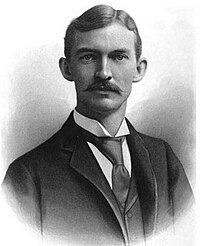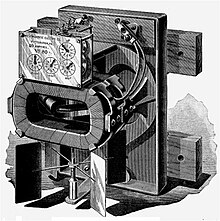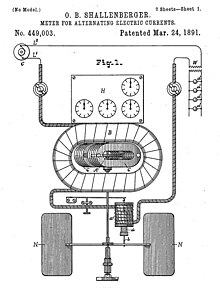Inventions and innovations
Shallenberger did much in electrical experimentation and original research. He invented a street-lighting system in which each of a series of incandescent lamps is connected to specially designed transformers so that upon the interruption of the current of any lamp, the normal current is allowed to flow through the corresponding transformer to the remaining lamps without a power surge. It was patent US740189. The design and construction supervision of these specially designed transformer systems were by him. He also was the first in the United States to innovate a method of connecting alternating current generators in a parallel circuit. Shallenberger was the first to demonstrate in the United States, with the assistance of George Westinghouse, the safety of alternating current and he was primarily responsible for the general usage of that type of current over that of direct current. Through his inventions he showed that the use of alternating current electricity was more efficient and safer to use than direct current.
Shallenberger, through a research laboratory accident, innovated a device that led to the invention in 1888 of an induction meter, a paramount apparatus of the Westinghouse alternating current system. One day when he was experimenting on a new type of lamp a spring fell off and landed inside the lamp on a small edge of the holding structure. Before it got replaced by a co-worker Shallenberger observed that the spring rotated by some sort of electromagnetic force. He then conceived the idea that perhaps this force field could be used to turn some small wheels in such a way that they could measure electricity. Shallenberger developed that force field concept into a mechanical device that could measure alternating current usage. He patented it under number US449003 A. It was a type of motor.
Shallenberger's meter device was improved to what is today the modern electric meter for recording and indicating watt-hours for the measure of electric energy consumed by a customer. His electric meter was used by the British Government Board of Trade as the primary instrument for the measurement of electric current. His electric meter for measuring alternating current electricity was known worldwide by the end of the nineteenth century. Securing accurate payment for electricity as a commodity had immense practical import. Shallenberger's electric meter invention was not the first to address the need for payment for electricity. Thomas Edison initially invoked a ‘per lamp’ surcharge in 1882. This gave way to a meter that used electrolytic jars that chemically measured zinc transfers and inferred electric usage. In 1888, Elihu Thomson patented a walking-beam meter, disparagingly labeled as a Rube Goldberg-styled device.
Shallenberger's simple AC motor (as it was later identified by Nikola Tesla) revolutionized electric meters. It operated on alternating current of 133 cycles per second. It was accurate and an important component of Westinghouse's AC electrical system. The meter sold 120,000 units within ten years. It enabled billing by the ampere hour, combining measures of current and charge. "Coulomb motor meters" are those that measure electric quantity used. Therefore, power companies that used Shallenberger's meters charged by the energy consumed.


